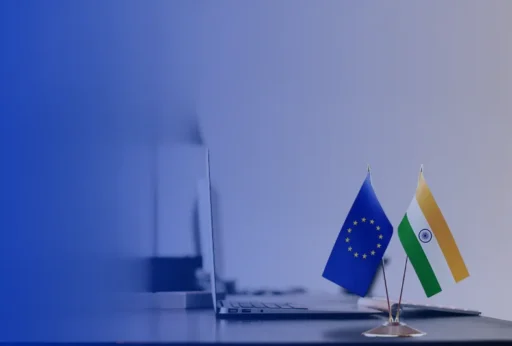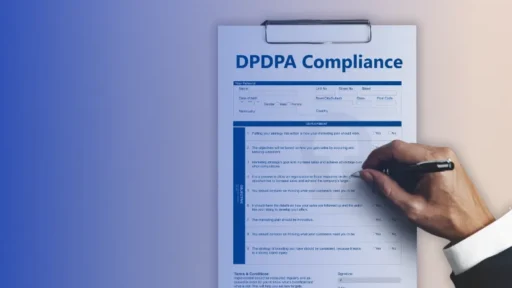In today’s world, particularly in the digital realm, change happens swiftly. A key area of concern is data, which has gained immense value. Securing personal information is crucial. However, are our current measures satisfactory for ensuring data security? Leaders worldwide are addressing this Vital issue making vital decisions to protect our data. India, too, acknowledges the importance of this global Effort. This blog shows the key differences between DPDPA and GDPR, highlighting their approaches to data protection, consent management, data processing principles, rights of individuals, and penalties for non-compliance.
Origin and Evolution of GDPR and DPDPA:
The General Data Protection Regulation (GDPR) sets up a thorough system for Securing data, covering all entities handling personal data of European individuals, no matter where they’re based. It defines personal data broadly and Focuses on key principles like transparency, purpose limitation, and data scaling down. Furthermore, it provides individuals with several rights, such as accessing, correcting, and deleting their data, along with the right to data portability.
The Digital Personal Data Protection Act (DPDPA) is a new law in India that aims to secure the privacy of personal data for Indian citizens. Both houses of Parliament passed it in August 2023, and it is set to become effective in early 2024. This Act marks India’s first comprehensive data protection law, designed to ensure that personal data is handled securely and responsibly.
Before the DPDPA, there was the Data Protection Bill, which served as the foundation for this new law. Initially presented to Parliament in 2019, the Data Protection Bill underwent multiple revisions before finally being approved in 2023. Understanding the Data Protection Bill is crucial because it sheds light on the Indian government’s approach to data protection. It also provides valuable insights into the key provisions incorporated into the DPDPA, setting the stage for a more secure digital environment for Indian citizens. Now let’s dive more into the comparison between DPDPA and GDPR.
Key Differences between DPDPA and GDPR
1. Territorial Scope and Applicability
GDPR: The GDPR has a wide scope, applying not only to organizations based in the EU but also to those outside the EU that offer goods or services to, or monitor the behavior of, EU residents.
DPDPA: The DPDPA applies to the processing of digital personal data within the territory of India, and it also applies to processing outside India if it is connected to offering goods or services to individuals within India. It explicitly does not apply to non-digital personal data or personal data processed for personal or domestic purposes.
2. Consent Requirements
GDPR: Consent under the GDPR must be freely given, specific, informed, and Precise, Prescribing clear Positive actions. It places a strong Focus on the right to remove consent at any time.
DPDPA: Similarly, the DPDPA requires consent to be free, informed, specific, and clear, allowing for the withdrawal of consent. Additionally, it introduces the concept of a “Consent Manager,” a registered entity that helps individuals manage their consent.
3. Data Processing Principles
GDPR: It lays down specific principles for data processing, such as lawfulness, fairness, transparency, purpose limitation, data minimization, accuracy, storage limitation, integrity, and confidentiality.
DPDPA: The DPDPA also emphasizes lawful and fair processing but specifically highlights the need for processing digital personal data for lawful purposes and in a manner that respects the right of individuals to protect their personal data.
4. Rights of Individuals
GDPR: GDPR provides individuals with several rights, including the right to access, rectify, erase (“right to be forgotten”), restrict processing, data portability, object to processing, and rights related to automated decision-making and profiling.
DPDPA: The DPDPA grants similar rights to individuals, such as the right to access, correction, erasure, and grievance redressal. However, it tailors these rights to fit within the Indian context, emphasizing the need for a Consent Manager to facilitate the management of consent by individuals.
5. Penalties for Non-Compliance
GDPR: GDPR is known for its stringent penalties, with fines of up to €20 million or 4% of the annual global turnover of the company, whichever is higher, for the most serious violations.
DPDPA: The Act introduces duties for data principals and imposes a penalty of up to INR 10,000 for any breach of duty. There are financial penalties up to INR 250 crore for data fiduciary and the Act does not impose criminal penalties for non-compliance.
6. Data Protection Authority
GDPR: Establishes a supervisory authority in each member state with powers to enforce the rules, conduct investigations, and impose fines.
DPDPA: Establishes the Data Protection Board of India, responsible for Supervising agreements, Settling differences, and imposing penalties.
Objectives of GDPR and DPDPA
There are various objectives of GDPR and DDPA which we will understand now.
GDPR
- The GDPR wants to make sure that you have a say in what happens to your personal info. You should be the boss of your own data!
- Instead of having different rules everywhere, the GDPR makes things simple. It’s like having one rulebook for all the countries in the EU. Less hassle for businesses means they can focus more on serving you better!
- The GDPR is like a guardian for your personal data. It works hard to make sure that nobody gets their hands on your info without permission. Your privacy matters and the GDPR’s got your back!
DPDPA
- Ensure that Indian citizens’ personal information is secured from unauthorized access or misuse.
- Encourage the ethical handling of personal data by promoting accountability among organizations.
- Enable individuals to manage and dictate how their personal information is used.
Summary
Both the GDPR and DPDPA are like guides for organizations, detailing how to handle personal data responsibly. They have similarities, such as giving people certain rights over their data and setting rules for businesses. They also differ in terms of who they apply to and how they manage consent and data transfers. Businesses dealing with personal data from EU or Indian residents need to study both laws to make sure they’re following the rules. This not only protects people’s privacy but also helps build trust with customers and partners.
Companies should consider surpassing legal requirements to protect data, rather than merely adhering to regulations. This shows they’re serious about privacy and can give them an edge in the market. As data protection laws change, organizations need to stay updated and make sure their practices match the latest rules. If you need help with this, feel free to reach out to Secure Privacy for assistance in keeping your customers’ data safe and complying with the law.
For businesses in India looking to build trust with their customers while adhering to DPDPA regulations, Concur is a smart choice. Taking privacy seriously not only aids in compliance but also strengthens customer relationships. In a nutshell, Concur provides peace of mind by making data protection simpler, allowing businesses to focus on what they do best. Concur offers tools that simplify managing consent, digital policies, and customer data requests. This means businesses can ensure they’re following the law without needing a team of experts. Concur’s platform is user-friendly, ensuring that even those who aren’t tech-savvy can use it with ease. It’s like having a guide by your side, helping you through the maze of compliance requirements.
Check Out: Best Consent Management Platforms in India 2024
FAQ on DPDPA and GDPR
GDPR aims to empower individuals with control over their personal data, harmonize data protection laws across the EU for simplicity and efficiency, and enhance privacy and data protection.
DPDPA applies to process digital personal data within India and about goods or services offered to individuals in India, unlike GDPR, which applies to entities handling EU residents’ data worldwide.
DPDPA introduces the concept of a “Consent Manager,” a registered entity that helps individuals manage their consent, which is not specified in GDPR.
Both impose stiff penalties for non-compliance, with GDPR fines of up to €20 million or 4% of annual turnover and DPDPA fines of up to ₹250 crores for certain violations.
GDPR establishes a supervisory authority in each member state to enforce regulations, while DPDPA establishes the Data Protection Board of India for compliance oversight and dispute adjudication.
Both emphasize lawful, fair, and transparent processing, purpose limitation, data minimization, accuracy, integrity, and confidentiality in handling personal data.
They encourage organizations to adopt higher data protection standards, fostering trust and ensuring privacy, with GDPR focusing on EU residents and DPDPA on Indian citizens’ data security.







Comments are closed.